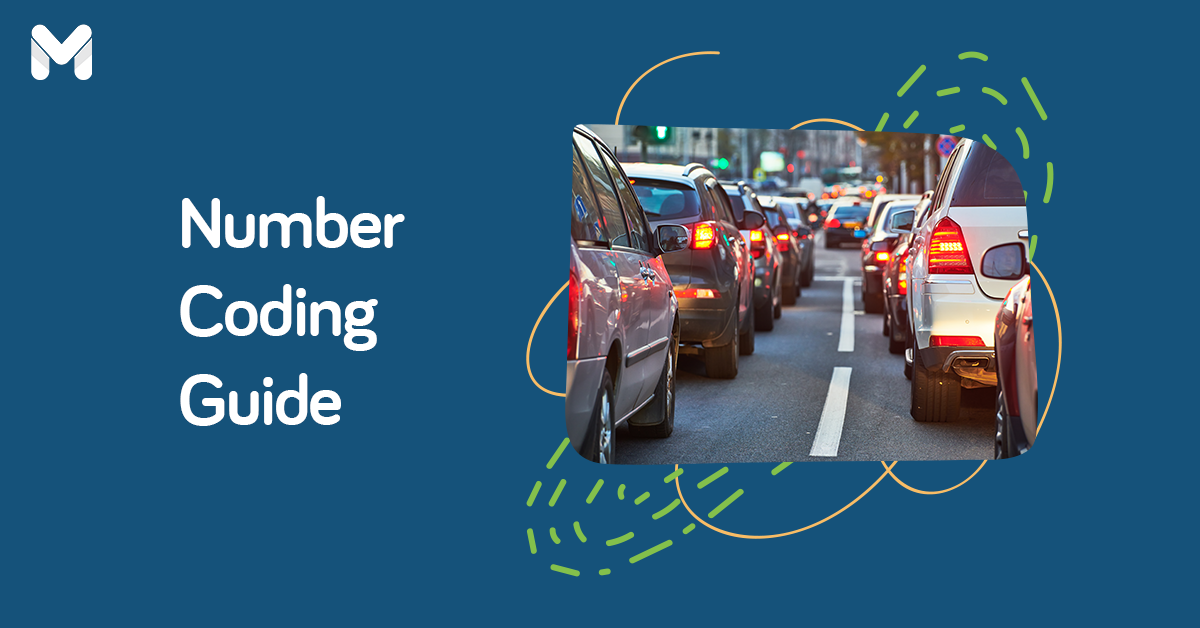That's a 46.6% drop in recorded incidents compared to the previous year, which can be attributed to COVID-19 lockdowns. Nevertheless, the fact that accidents still happen only shows that there are irresponsible drivers (and even pedestrians) on the road.
While we can’t determine the exact number of people who didn’t follow the road signs and traffic rules, we know that there's still a lot. As a motorist, you know too well that the lives of the people on the road and the sidewalks all depend on you. As such, you need to religiously follow all the traffic signs that you see while you drive.
If you need a refresher, we’ve come up with a handy guide to the road traffic signs in the Philippines.
What are Road Signs and Symbols?
Road traffic signs are symbols that guide drivers and pedestrians toward their destination and keep them safe while they’re on the move. They provide direction, a warning, or instruction to drivers. Some signs are usually placed at the side of the street, but they can also be found above the roads.
Traffic signs in the Philippines are designed in a way that allows road users to digest information quickly. They’re simple and striking so that there will be no room for misinterpretations.
This is why traffic signs are usually written in large letters or shown as pictures or symbols. In some cases, they’re translated into Filipino or the place's local dialect, so locals will understand them easily.
What is the Importance of Road Signs in the Philippines?

Safety―this is the number one reason road signs exist. Traffic signs are placed in congested and accident-prone areas to warn people of potential dangers. Some street signs explain the rules of road usage to facilitate more efficient traffic flows.
For motorists, road signs can also be cues for more mindful driving. As for pedestrians, these signs point them to areas that are safe for walking and crossing.
Legally speaking, learning the road signs is one of the primary requirements for getting a driver’s license. The LTO written exam even has a section dedicated to it.
Read more: Vehicular Accident Law in the Philippines: Know the Dos and Don’ts
7 Types of Road Traffic Signs in the Philippines and Their Meanings
You’ll see assortments of road and traffic signs in the Philippines, and it’s important that you know them by heart. These signs can be divided into seven categories.
1. Regulatory Signs

As the name suggests, regulatory signs provide information on traffic laws in the Philippines. Some classic examples include STOP, GIVE WAY, NO ENTRY, and speed limit signs. Because motorists are obliged to follow these signs, violating them will result in penalties and sanctions.
Types of Regulatory Traffic Signs in the Philippines
- Priority signs - STOP, GIVE WAY, and LEFT TURNER MUST GIVE WAY signs
- Directional signs - ONE WAY, KEEP RIGHT, NO TURN, etc.
- Prohibitive/Restriction signs - NO PEDESTRIAN CROSSING, NO ENTRY, NO MOTORCYCLES, etc.
- Speed signs
- Parking and stopping signs - NO STOPPING ANYTIME, NO LOADING AND UNLOADING ANYTIME, etc.
- Miscellaneous signs - No blowing of horns, FASTEN SEATBELT, Bike lane ahead, etc.
Read more: Eyes on the Road, Hands on the Wheel: What to Know About the Anti-Distracted Driving Act
2. Traffic Instruction Signs

The signs under this category complement the regulatory signs and support the implementation of traffic rules. They tell motorists and pedestrians to follow the specific instructions on the road that they’re using.
Examples for pedestrians include USE OVERPASS or USE PEDESTRIAN CROSSING. If you’re a motorist, watch out for signs like REDUCE SPEED, SLOW VEHICLES USE RIGHT LANE, or TURN RIGHT ANYTIME WITH CARE.
Types of Traffic Instruction Signs in the Philippines
- Supplementary signs - USE OVERPASS, USE PEDESTRIAN CROSSING, and TRUCKS USE LOW GEAR
- Movement instruction signs - REDUCE SPEED, TURN LEFT WITH CARE, GIVE WAY TO PEDESTRIANS, ROAD CLOSED, etc.
3. Warning Signs

Signs under this category warn motorists and pedestrians about the hazards on the road or sidewalk. They may tell drivers that the road is steep or there’s a hump ahead. Some signs also tell road users that the area they’re traversing may be prone to flooding and landslides.
A few good examples include SLIPPERY WHEN WET, RAILROAD CROSSING, SLOW DOWN PED XING AHEAD, and VERTICAL CLEARANCE.
Types of Warning Signs in the Philippines
- Horizontal signs
- Intersection signs
- Advance warning/traffic control device signs
- Road width signs
- Road obstacle signs
- Pedestrian signs
- Railway level crossing signs
- Supplementary signs
- Other warning signs
4. Guide/Informative Signs

These signs generally guide road users in the direction of specific destinations, the distance to the next city or town, and the location of important roadside services, such as gasoline stations, restaurants, and restrooms.
Types of Traffic Signs That Give Place/Road Directions to Motorists
- Advance direction signs
- Intersection direction signs
- Reassurance direction signs
- Fingerboard direction signs
- Street name signs
- Town names and geographical feature signs
- Service signs
- Tourist information and tourist destination signs (e.g., Taal Lake or Pagsanjan Falls)
- Route markers (e.g., Asian Highway[2])
5. Expressway Signs

If there are no signs on the expressways, you run the risk of missing your exit. Signs on expressways provide motorists with advanced information that will tell them to drive into their correct lane so that they can exit easily and safely.
Some signs provide information on big no-nos and prohibitions on the expressway, such as pedestrians, animal-drawn vehicles, and long and wide loads. They may also point the drivers to the nearest rest area or service center.
There are signs that indicate the start and the end of the expressway. Some special signs, on the other hand, may give drivers valuable reminders such as checking their brakes and reducing their speed.
Types of Expressway Signs in the Philippines
- Expressway approach signs
- Expressway information signs
- Advance exit signs
- Exit direction signs
- Service signs
- Expressway traffic instruction and regulatory signs
- Start and end of expressway signs
Related article: Toll Fees Philippines 2022: How Much to Pay at NLEX, SLEX, and More
6. Hazard Markers

What is the main use of hazard markers, you might ask? These road traffic signs in the Philippines tell drivers that the road ahead will be changing its direction, or that an obstruction is in place.
Examples of these road signs are the series of red arrows (or chevron signs) that you see on long, winding provincial roads. These are actually called one-way hazard markers, which signal the driver to follow the direction of the arrow, as the road ahead bends.
Types of Hazard Markers in the Philippines and Their Meanings
- One-way hazard markers - Indicate the direction to be followed at the end of the road
- Two-way hazard markers - Warning that the road ahead is about to change direction
- Sign used on a wide column of an overpass structure, median island
- Width markers - Narrowing vehicle width clearance
- Obstruction markers - Road closure ahead
7. Road Work Signs
Signs falling under this category inform road users that construction or excavation work is ongoing. They also warn of potential dangers within the area (e.g. deep holes, falling debris). These signs may also prompt the driver to slow down or change their route.
Read more: Huwag Kang Pasaway: 10 Driving Tips in the Philippines

FAQs on Road Traffic Signs in the Philippines
Each traffic sign you see on the road is very straightforward and easy to understand. Nevertheless, you may still have some questions related to them. Hopefully, you’ll find the answers in this section.
1. Are pavement markings considered road signs?
The Department of Transportation (DOTr) and the Land Transportation Office (LTO) place pavement markings in a different category.
Nevertheless, learning these marks is essential since they complement traffic and road signs in the Philippines. They add another layer of safety for both drivers and pedestrians.
Some examples of pavement markings include the following:
- Longitudinal lines – These include double solid yellow lines, center lines, lane lines, transition lines, and the like.
- Traverse lines – These include STOP lines and pedestrian intersections.
- Others – These include DO NOT BLOCK intersection lines, turn lines, and lane lines for buses and PUJs.
2. What happens if I disregard the road signs?
If you don't comply with the road signs and symbols in the Philippines, you become a traffic violator. The worst that can happen is a fatal accident. Keep in mind that each violation comes with a penalty or sanction. Committing a first offense may require you to pay a ₱150 fine.
If you’re driving within Metro Manila, remember that there’s a No Contact Traffic Apprehension Policy in place. This policy uses CCTV, digital cameras, and other gadgets to capture videos and images of vehicles violating traffic laws, rules, and regulations.[3] This means that even if your violation is not caught by an MMDA traffic enforcer, you’ll still receive the summons to settle your fines and penalties within seven days.
3. Where can I learn more about basic traffic signs in the Philippines?

The LTO Driver’s License Exam is composed of theoretical and practical tests that will determine if you really know what the traffic signs are. If you want to learn more about this aspect of driving, just visit LTO’s Land Transportation Management System (LTMS) portal[4] and access the learning materials.
Here’s how you can access the materials:
- On the LTMS page, click the E-Learning tab.
- Click Getting Ready to Drive.
- On the next page, click Road Traffic Signs. If you want to learn more about road markings, click Pavement Markings instead.
The E-Learning tab also leads you to other topics that will help you become a responsible driver, such as the following:
- Driving Fundamentals
- Road Courtesy and Safety
- Rights, Duties, and Responsibilities of Drivers
- Land Transportation-Related Laws
Final Thoughts
If you’re a motorist, you need to understand that a road is a dangerous place by default and that you have to navigate it with utmost care and caution. The worst that can happen is a fatal accident, but do you really need to wait for it to happen before you become more conscious of your driving?
The same goes for pedestrians. If you’re a runner or biker, you have to keep in mind that following traffic signs in the Philippines is also for your own good. Shortcuts may get you faster to your destination, but at what cost?
If you’re still reading this part of the article, congratulations. You’re one step closer to becoming a good driver and responsible pedestrian.

Sources:
- [1] MMARAS Annual Report 2020 (MMDA)
- [2] The Asian Highway Network
- [3] No Contact Traffic Apprehension Policy
- [4] LTMS Portal









